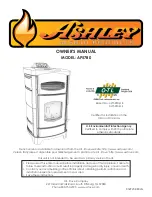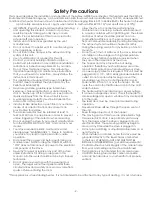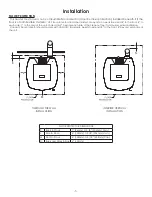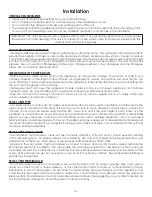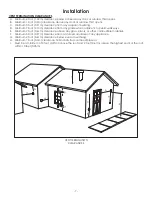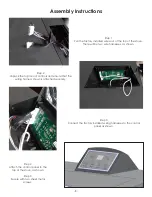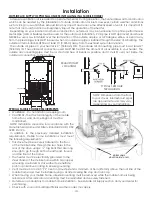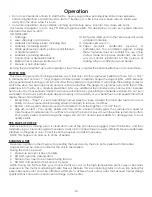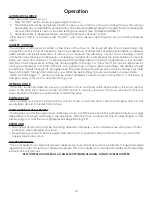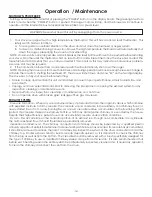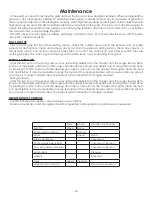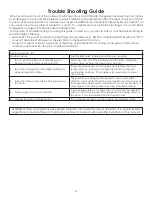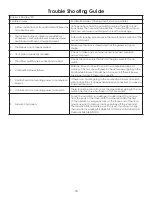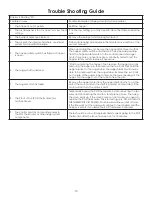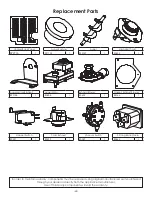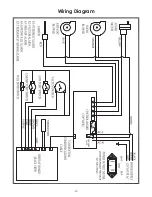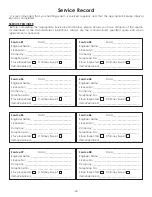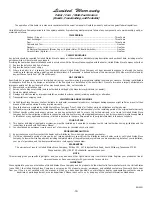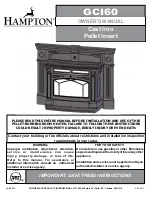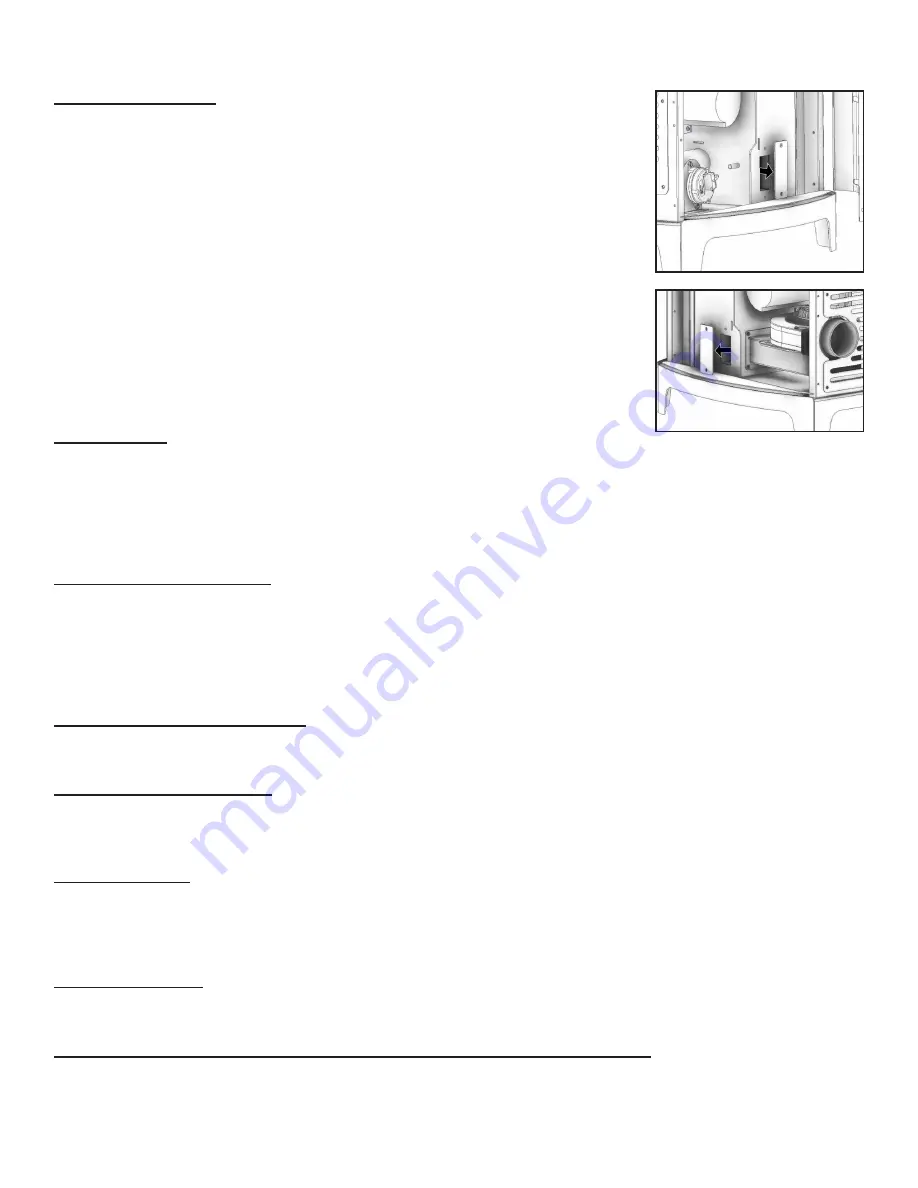
-
15
-
INTERIOR CHAMBERS
• Burn Pot: Periodically remove and clean the burn pot and the area inside the
burn pot housing. In particular, it is advisable to clean out the holes in the burn
pot to remove any build up that may prevent air from moving through the
burn pot freely.
• Heat Exchanger: There is a clean out plate on both sides of the heat
exchanger that need to be removed to clean fly ash out of the heat
exchanger. The cleanouts are located inside the cabinet doors, on the lower
front corners of the heat exchanger. To access these clean outs, you must
remove both side panels. The clean outs are secured to the firebox with (2)
5/16” screws. Remove the clean outs and vacuum out any accumulated
ash. This should be done at least once per month or more frequently if large
amounts of ash are noticed while cleaning or if the stove does not seem to be
burning properly.
If a vacuum is used to clean your stove, we suggest using a vacuum designed
for ash removal. some regular vacuum cleaner (i.e. shop vacs) may leak ash into
the room.
DO NOT VACUUM HOT ASH
ASH DISPOSAL
Remove ashes when unit has cooled. Ashes should be placed in a metal
container with a tight fitting lid. The closed container of ashes should be placed on a noncombustible floor or
on the ground, well away from all combustible materials, pending final disposal. If the ashes are disposed of by
burial in soil or otherwise locally dispersed, they should be retained in the closed container until all embers have
been thoroughly cooled. The container shall not be used for other trash or waste disposal. If combined with
combustible substances, ashes and embers may ignite.
SMOKE AND CO MONITORS
Burning wood naturally produces smoke and carbon monoxide(CO) emissions. CO is a poisonous gas when
exposed to elevated concentrations for extended periods of time. While the modern combustion systems in
heaters drastically reduce the amount of CO emitted out the chimney, exposure to the gases in closed or confined
areas can be dangerous. Make sure you stove gaskets and chimney joints are in good working order and sealing
properly to ensure unintended exposure. It is recommended that you use both smoke and CO monitors in areas
having the potential to generate CO.
CHECK AND CLEAN THE HOPPER
Check the hopper periodically to determine if there is any sawdust (fines) that is building up in the feed system
or pellets that are sticking to the hopper surface. Clean as needed.
DOOR AND GLASS GASKETS
Inspect the main door and glass window gaskets periodically. The main door may need to be removed to have
frayed, broken, or compacted gaskets replaced by your authorized dealer. This unit’s door uses a 5/8” diameter
rope gasket.
BLOWER MOTORS
Clean the air holes on the motors of both the exhaust and distribution blowers annually. Remove the exhaust
blower from the exhaust duct and clean out the internal fan blades as part of your fall start-up. If you have indoor
pets your power motors should be inspected monthly to make sure they are free of animal hair build up. Animal
hair build up in blowers can result in poor performance or unforeseen safety hazards.
PAINTED SURFACES
Painted surfaces may be wiped down with a damp cloth. If scratches appear, or you wish to renew your paint,
contact your authorized dealer to obtain a can of suitable high-temperature paint.
GLASS - CLEANING, REMOVAL AND REPLACEMENT OF BROKEN DOOR GLASS
Cleaning - We recommend using a high quality glass cleaner. Should a buildup of creosote or carbon accumulate,
you may wish to use 000 steel wool and water to clean the glass. DO NOT use abrasive cleaners. DO NOT perform
the cleaning while the glass is HOT. ,
Maintenance
Содержание Ashley AP5780
Страница 27: ...27 Wiring Diagram 1 25A 250V FUSE 7 5A 250V FUSE...
Страница 28: ...Notes...
Страница 34: ...27 1 25A 250V Fusible 7 5A 250V Fusible Sch ma De C blage...

